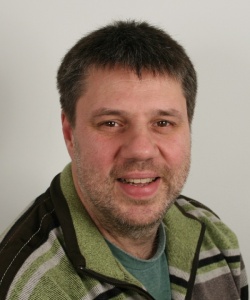IT-assisted triage
Bettina Döbereiner reports
The project consortium Alarm has developed new software to enable a computer-assisted triage-system for mass accidents and catastrophes. Torsten Schröder, emergency physician at the Charité Clinic for Anaesthesiology, with the focus on operative Intensive Care Medicine in Berlin, gave a mid-term review of the project and explained the advantages of the IT-supported triage-system for mass-casualty-incidents at HAI 2010.

‘Generally, we must assume a chaotic and confusing period when the first ambulance crew arrives on scene,’ said Torsten Schröder, addressing this year’s annual conference of the German Society for Anaesthesiology and Intensive Care Medicine (DGAI) in Berlin. ‘At this stage, the emergency team is too limited to help all the injured at the same time. Seriously injured people must be singled out from the less injured.’
To face this chaotic period adequately, a special method called STaRT (Simple Triage and Rapid Treatment) was developed in the ’80s and is now an internationally used method to categorise casualties by the severity of their injuries. The whole evaluation process for one person should be conducted in 60 seconds or less. The Berlin fire brigade, one of the consortium partners, for example uses STaRT.
Instead of the paper-based questionnaire in A4 format, Alarm developed a computerised triage algorithm for a handheld computer. Compared to the paper version, according to Torsten Schröder the computerised triage algorithm has, many advantages, the most significant being immediate information transfer. The triage findings can be consulted immediately from a central database, which enables selected, prompt decision-making for the on-scene incident leader. The results of algorithm-based triage are edited and consequently easier to manage. Additionally, a GPS function identifies the location of the injured. ‘Our current terminal device (Endgerät) is a tough handheld device, which offers redundant information transfer by different tools, such as the radio (Funk) and mobile telephone service -- the function to broadcast via Satellite -- WLAN coverage of 2.4 gigahertz, RFID-Scanner and a Bluetooth interface to ensure a secure data-transfer,’ he explained.
The project consortium consists of eight partners, one half responsible for the software solutions, the other for the expertise as protagonists of mass-casualty-incidents, such as Torsten Schröder, deputising the Charité Clinic for Anaesthesiology with the focus on operative Intensive Care Medicine.
The project is promoted for three years by the Federal Ministry of Education and Research and is headed by the Telemedicine Centre at Charité. For its second period the consortium plans to complete the IT-supported handling of first aid to an integrated system, comprising computer-assisted treatment areas for follow-up intervention. The integrated system of IT-supported medical care has to prove its usability in a full scale exercise, which is scheduled for the end of project term.
03.11.2010









